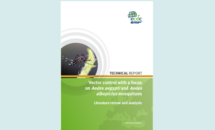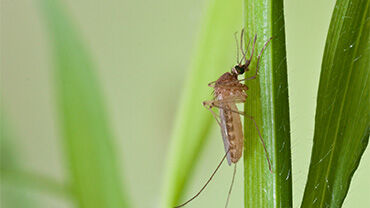Vector control with a focus on Aedes aegypti and Aedes albopictus mosquitoes - Literature review and analysis
The main research question that this literature review aims to answer is: what are the currently recommended vector control measures in Europe against Ae des aegypti and Ae des albopictus (keeping in mind that a combination of methods would certainly be required)?
Executive summary
Background
The global movement of goods and people, and climate change have contributed to the spread of the ‘invasive’ mosquitoes Ae des aegypti and Ae des albopictus into Europe. Rather than simply being a nuisance the presence of these mosquitoes represents a major risk to public health. This literature review collects, summarises and analyses current international, national and sub-national technical documents, guidance and recommendations on control methods against invasive mosquitoes.
Methods
The literature review was performed by searching bibliographic databases, internet sources and the websites of relevant authorities. Searches were not limited to English language sources or documents, but were limited by date to 2006 onwards. The bibliographic database search strategies were reviewed by a literature search expert from the European Centre for Disease Prevention and Control (ECDC). A call for evidence was launched by ECDC’s emerging and vector-borne diseases (EVD) programme to collect further technical materials, which may not have been published by the EU Member States. Once identified, documents were sifted using inclusion and exclusion criteria. Data was extracted into tables using headings based on ECDC’s pre-specified areas of interest. These headings form the basis of the analysis, with additional themes reported in the findings section.
Findings
The literature review included 29 guidance documents and 18 technical/evaluative documents. The main gaps identified were in relation to evaluation, sustainability and community engagement. Although many of the documents described evaluation as part of integrated vector management, it was unclear how the outcomes were integrated into practice and contributed to the continuous improvement of integrated vector management (IVM) programmes. Ensuring the continuing effectiveness of current control methods ensures in turn that programmes are sustainable. Approaches to help conserve the longevity of chemical control methods were restrained use, monitoring of localised resistance and the incorporation of the data into practice. According to many of the documents sourced, communities had a vital role to play since the effectiveness of control measures implemented in public spaces could be greatly improved by extending them to residential and commercial private property.
Discussion and conclusions
This review identified key areas where there is a lack of information and where opportunities exist to further enhance vector control across Europe. Publishing or otherwise sharing evaluations of vector control programmes would facilitate knowledge exchange and contribute to the creation of a European evidence base. Research into alternative control methods could increase the range of tools available, to improve the sustainability of the chemical products currently available. There is scope for further evaluation of the best methods for communicating with communities to encourage their participation in mosquito control which, in turn, could inform evidence-based practice.
Further monitoring and evaluation would facilitate evidence-based practice which could potentially increase the effectiveness and sustainability of control methods. There is scope for European-wide guidance to support this activity and ensure best practice.
Download






